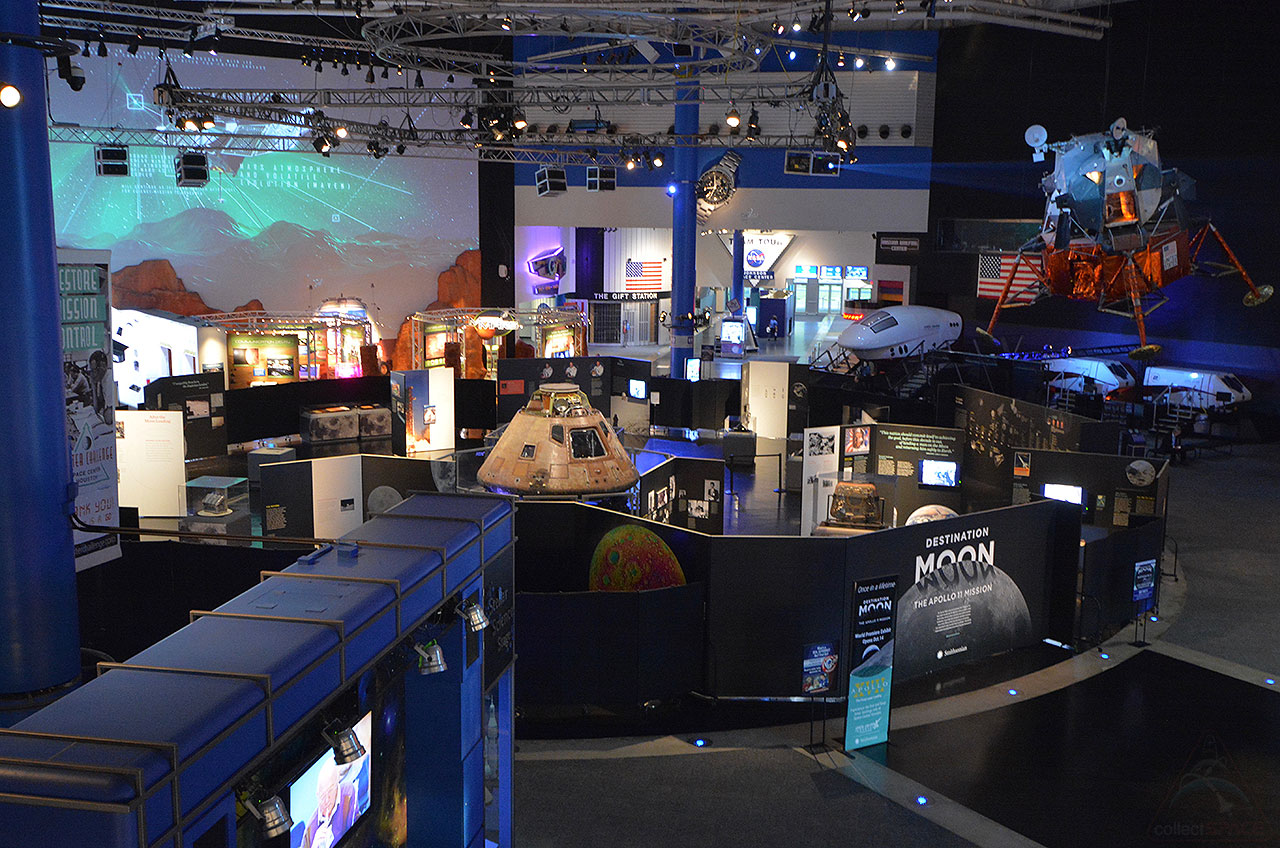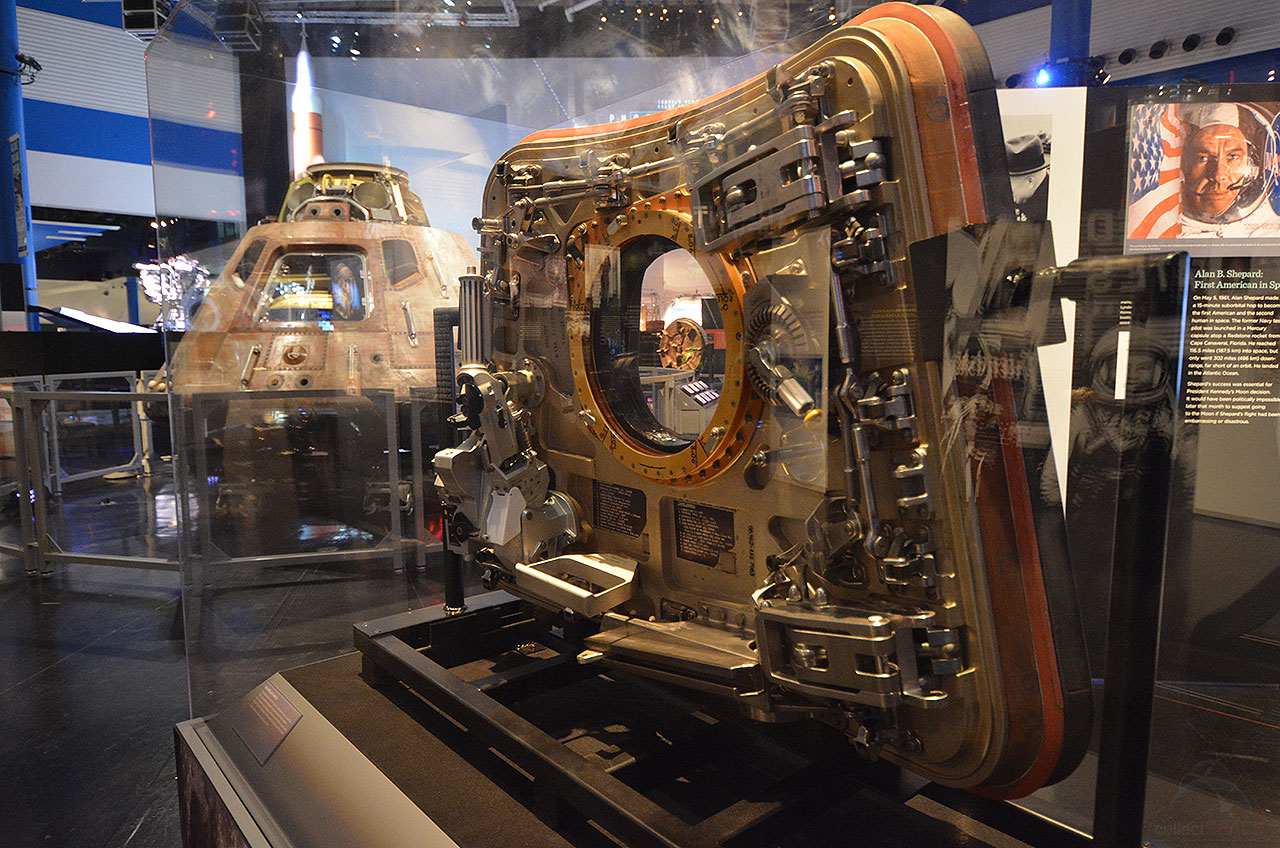Apollo 11 Spacecraft Traveling Exhibit Lands at Space Center Houston

Small in size but giant in its historical stature, Columbia, the Apollo 11 command module, has taken center stage at Space Center Houston, where it is premiering on display as the star of the Smithsonian's new "Destination Moon: The Apollo 11 Mission" traveling exhibit. The capsule and more than 20 related artifacts open to the public on Saturday (Oct. 14) at the Smithsonian Affiliate and visitor center for NASA's Johnson Space Center in Houston, Texas.
"It is wonderfully appropriate that we begin the national tour of 'Destination Moon: The Apollo 11 Mission' here, in Space City," said Myriam Springuel, director of the Smithsonian Institution Traveling Exhibition Service (SITES), at a press preview on Thursday (Oct. 12). "It is incredible that just next door is the heart of our nation's human spaceflight programs, from the early Gemini and Apollo projects to today's International Space Station." [Gallery: First Look at “Destination Moon: The Apollo 11 Mission]
"Together with the Smithsonian, Space Center Houston has worked to bring this monumental exhibit here," William Harris, the president and CEO of Space Center Houston, said. "We are so excited to share this blockbuster exhibit with you."
The "Destination Moon" exhibit celebrates the upcoming 50th anniversary of the first moon landing. It marks the first time that the Apollo 11 spacecraft has been on display outside the Smithsonian since it arrived at the Washington, D.C. institution in 1971. The Smithsonian's National Air and Space Museum is using the time that Columbia is away on tour to prepare a new gallery dedicated to the exploration of the moon to debut in 2021.
"While that work is being done, the Smithsonian is thrilled that, as we approach the 50th anniversary of one of the greatest achievements of human history, we can share the iconic Apollo 11 command module Columbia and other key artifacts from that historic mission," said Springuel.
The traveling exhibition will be in Houston through March 18, 2018, and then will move onto three other museums and science centers in St. Louis, Pittsburgh and Seattle over the next two years.
The 5,000-square-foot (465 square meters) exhibition traces the historic voyage of Neil Armstrong, Buzz Aldrin and Michael Collins through the equipment they used to reach and explore the moon. In addition to Columbia, the only part of the Apollo 11 spacecraft to return intact to Earth, the display also includes Aldrin's spacesuit helmet visor and gloves worn on the lunar surface, the wristwatch worn by Collins in orbit and the sample return container utilized by Armstrong and Aldrin to bring back the first moon rocks for study.
Breaking space news, the latest updates on rocket launches, skywatching events and more!
"Destination Moon" also includes part of an F-1 rocket engine from the Saturn V rocket that launched Apollo 11, recovered from the bottom of the Atlantic Ocean in 2013 by a private expedition funded by Amazon.com CEO Jeff Bezos. The injector plate, which regulated the flow of propellant, is making its public debut as a part of "Destination Moon."
"The exhibition celebrates the incredible successful [Apollo 11] mission, while also providing context to the question 'Why did we go to the moon?'" said Springuel. "From our long fascination with our closest neighbor to the political pressure of a growing Cold War, 'Destination Moon' examines the technological and scientific contributions of the space program."
"It looks at the birth of the American space program and sheds light on the more than 400,000 people who worked through the trials, tragedies and triumphs of the 20 missions across eight years that led to Apollo 11," she said.
At Space Center Houston, Columbia is displayed adjacent to an existing exhibit of an Apollo lunar module that was used to train astronauts, and in the same building as another flown-to-the-moon spacecraft.
"Space Center Houston is the only place in the world where you are going to see the command module from the first and final Apollo missions to land humans on the moon," said Harris. "We've actually had Apollo 17 since we opened in 1992. In fact, Monday [Oct. 16] is the 25th anniversary of Space Center Houston."
Take a first look tour of "Destination Moon: The Apollo 11 Mission" at collectSPACE.
Follow collectSPACE.com on Facebook and on Twitter at @collectSPACE. Copyright 2017 collectSPACE.com. All rights reserved.

Robert Pearlman is a space historian, journalist and the founder and editor of collectSPACE.com, a daily news publication and community devoted to space history with a particular focus on how and where space exploration intersects with pop culture. Pearlman is also a contributing writer for Space.com and co-author of "Space Stations: The Art, Science, and Reality of Working in Space” published by Smithsonian Books in 2018.
In 2009, he was inducted into the U.S. Space Camp Hall of Fame in Huntsville, Alabama. In 2021, he was honored by the American Astronautical Society with the Ordway Award for Sustained Excellence in Spaceflight History. In 2023, the National Space Club Florida Committee recognized Pearlman with the Kolcum News and Communications Award for excellence in telling the space story along the Space Coast and throughout the world.



